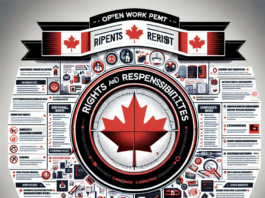If you’re like many business owners, you rely on certain pieces of equipment to perform as long as possible. Breakdowns and even minor disruptions can have an outsized effect on your business.
However, even when you have the best models, sooner or later you’ll have to perform or order some kind of maintenance, whether it concerns a machine, an appliance, a vehicle, or a handheld device. The challenge is you can’t know precisely when most breakdowns will occur.
There’s no way to pinpoint when your laptop’s hard drive will fail or your car’s air conditioner motor will blow out. Although you can’t predict the date and time your equipment will fail, predictive maintenance can give a rough sense of when your gear is headed in that direction.
What is predictive maintenance?
Fleet management software specialists at Cetaris describe predictive maintenance as a strategy that “relies on collecting sensor measurements, calculating future performance, and then scheduling the actual maintenance work to take place at a time it would provide the most benefit for the least amount of cost or downtime.” This applies to vehicle fleets, but it can also refer to office machines and other equipment.
How do businesses benefit from predictive maintenance?
Although it requires some up-front investment in parts, hardware, training, and software, the benefits of predictive maintenance outweigh the initial costs. Here are some of the benefits you may expect:
- Increased uptime/decreased downtime. The more you catch maintenance needs before they become a major issue, the more uptime you’ll garner. You won’t have to shut down vital functions for any significant period of time.
- Lower maintenance and repair costs. Not only will you save money on repairs, but you’ll also save on labor because you shouldn’t be compelled to do so much patchwork.
- Fewer substantive repair jobs. This might be the largest benefit of practicing predictive maintenance. Sooner or later, small issues left unresolved will lead to bigger problems. If you stay on top of those small items, they won’t cause bigger headaches down the road.
- Fewer unexpected breakdowns. An unexpected breakdown can cost you a fortune in repair fees, especially since emergency repairs come with a premium.
- Higher customer satisfaction. When your operations don’t get shut down for long stretches to respond to in-house problems, your customers won’t suffer a negative impact. They might fail to notice anything went wrong.
Electronic sensors are better than human senses
The key to making predictive maintenance work is to install sensors. Using data gathered by them to calculate the ideal time to perform maintenance can be a game changer.
Sensors will collect details that human eyes and ears can’t pick up, which means you’ll receive warnings about issues long before they turn into a major complication. For example, an electronic sensor can register slight pressure changes and a reduction in fluid level in a hydraulic system, which could suggest a leak might be developing.
Predictive maintenance ensures you can run your maintenance duties on your own schedule rather than wait for something to malfunction and be forced to pause your productive activities while you order repairs.
Knowing about common issues helps, too
In addition to collecting data with electronic sensors, predictive maintenance also entails maintenance tasks you schedule around common issues. If you know your computer’s hard drive has about a five-year lifespan, you’ll be prepared to have it replaced at any time by keeping a spare drive on hand.
Alternatively, you might upgrade your computer every five years just to be safe and keep your firm running steadily.
It’s just as worthwhile to run routine maintenance that doesn’t necessarily prevent a specific breakdown, but can suppress the potential for it over time. For example, you’ll want to clean the printheads on your printers periodically to prevent the ink from clogging.
Part of this might involve swapping out your good ink for a cartridge specifically designed to clean the printheads. You should also be regularly dusting your computers and servers to keep cooling fans and other parts working.
Start using predictive maintenance today
It’s not hard to implement a predictive maintenance strategy in your company. First, you ought to invest in the proper equipment to monitor devices and collect the relevant data.
You’ll want ongoing measurements of temperature, pressure, lubricants, noise, and vibration. All these factors can tell you a lot about which parts might be on the verge of a breakdown.
Then you’ll need to create a custom strategy that works for your business. Once you implement predictive maintenance practices in your organization, you’ll see why so many other owners and managers rely on them.



